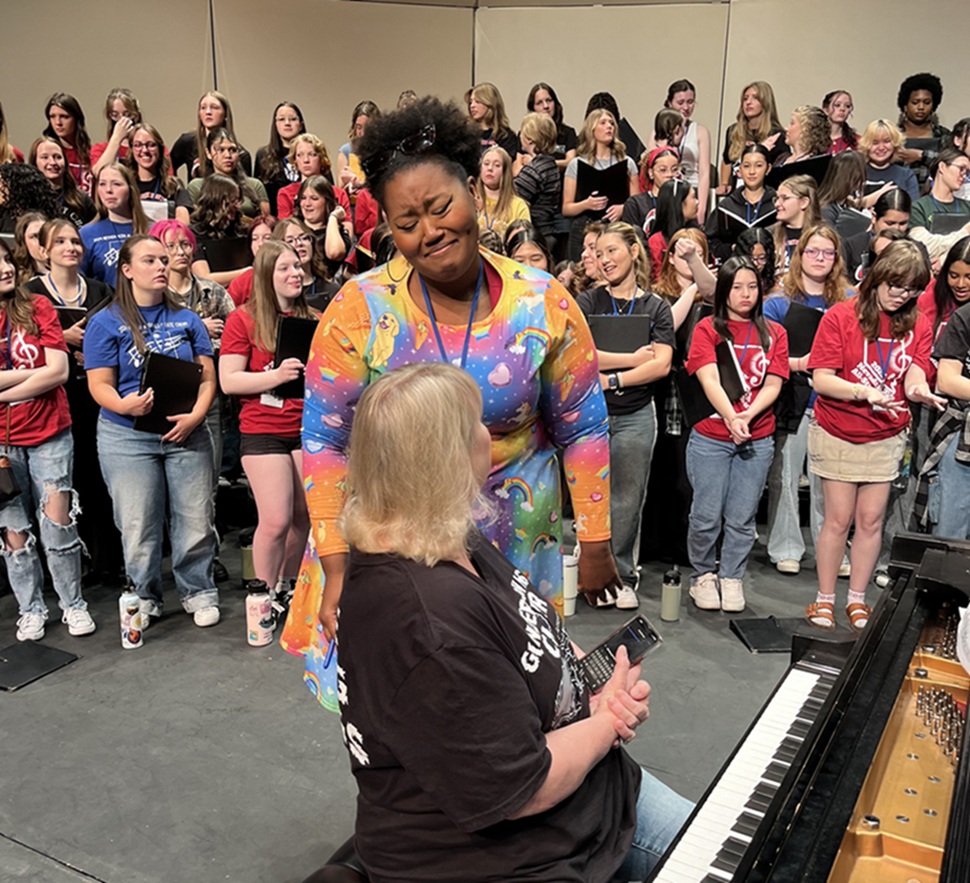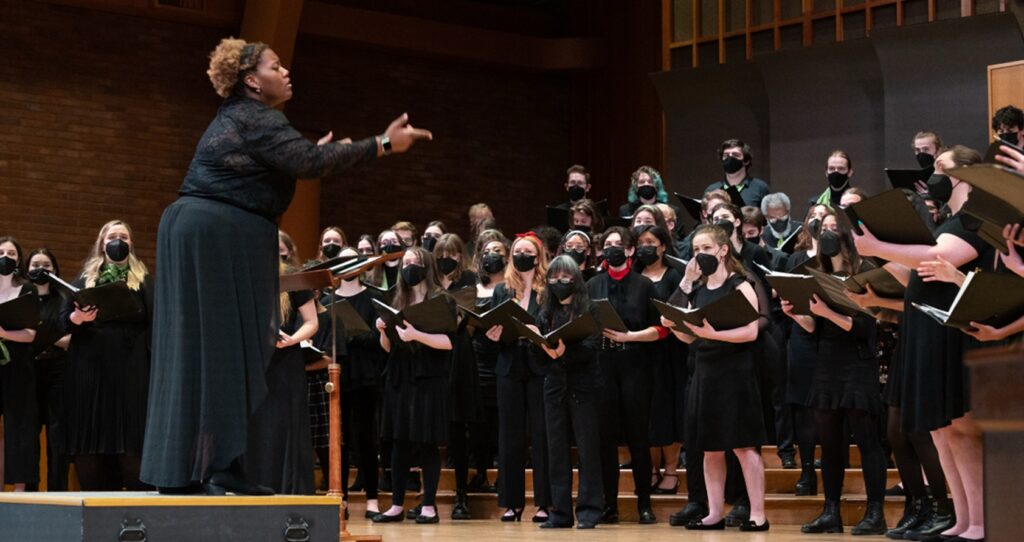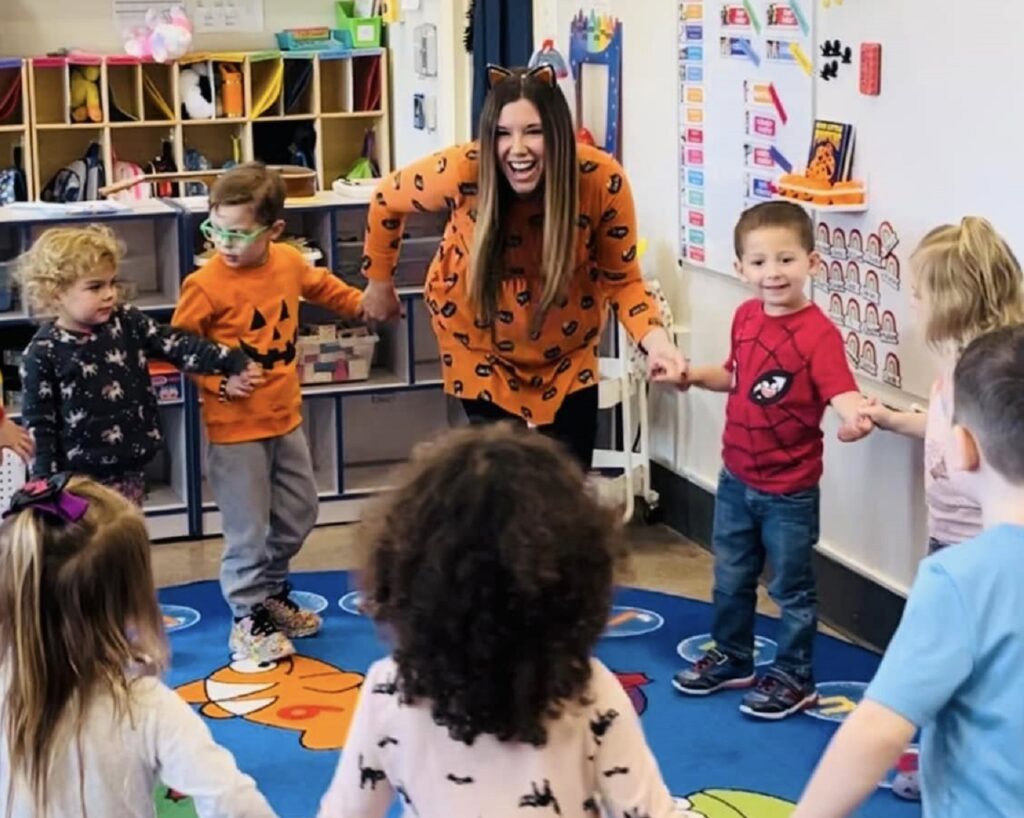Tagged Under:
Use Music to Connect with Students of All Ages
An adjunct professor at George Mason University helps music education majors as well as children around the world to communicate through music.
Angela Ammerman recalls the serendipitous moment in 2018 when a colleague talked about going to Thailand to teach music to children at Hope House Children’s Home. She spontaneously said, “I’ll go!”
Ammerman, who’d always felt compassion for children in difficult situations, packed up violins and flew with them to Thailand, where she spent 10 days at the rescue home for abused, abandoned and neglected children. She taught children in grades 4-12 how to play the violin. However, Ammerman faced a major obstacle: The kids didn’t speak a word of English, and she didn’t speak a word of Thai. How could she teach them when she couldn’t communicate with the kids verbally?
Spoiler alert: At the end of their time together, kids were playing Canon in D and performed a little concert for the community.
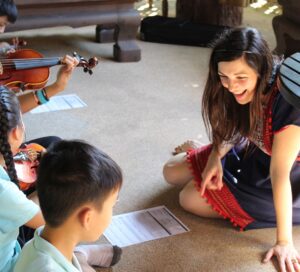
Finding Ways to Communicate
How did Ammerman make that happen? She figured out a way to communicate with the students, who spoke tribal dialects, through body language and using a lot of call and response. Ammerman would stomp her feet, one foot at a time, to demonstrate the proper posture for playing, and use arm gestures while playing the violin, so that kids would start to associate those movements with the instrument.
She would teach students a few key music words in English, like “Bravo!” which she would say when they did things correctly. The children caught on to her modeling and repeated after her. Soon, the kids would say “Bravo!” themselves as a happy word. The older kids would help teach the younger kids, using the same methods as Ammerman.
Ammerman also made the effort to learn a few words of Thai dialects, and she tuned in to the kids’ sound effects. One quirky thing the Thai students did was tease each other with what sounded like “Ding, ding, ding!” in reference to scorpions. Ammerman used that running joke by making the same sound in her violin lessons.
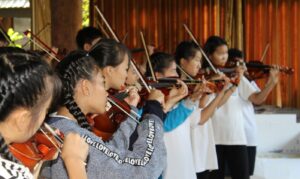
“That brings the connection between the violin and who they are socially together, so that they see themselves in my lessons — and now, they are part of the curriculum,” says Ammerman.
The results were phenomenal. Ammerman recalls an especially touching story about a young girl, who had experienced trauma and wouldn’t speak, progressed socially; by the last day, the girl was playing with good posture rather than hunched shoulders. Another child, after days of practicing, told Ammerman: “I’m not feeling tired and sleepy anymore.”
At the end of the last day, Ammerman taught the Thai students to say: “I love violins!”
“They said it to me, and I just lost it,” she says. “All these things are very clear signs to me that their confidence was being boosted.”
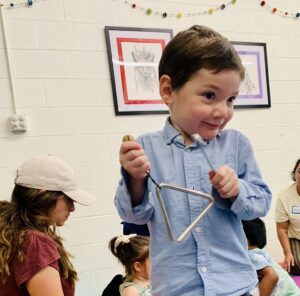
Working with the Youngest Students
Ammerman, who now lives in Fredericksburg, Virginia, uses almost identical techniques when teaching young music students at Art Time 4 Kids. Her youngest classes range in age from toddlers to babies, who absorb the music they hear.
Like she did in Thailand, Ammerman pays attention to what her students say. She takes the natural babbling and sound effects the children make with their own friends and families and makes an effort to put those same sounds to music.
“All of a sudden in a music class, students start to speak the words they’ve been working on,” says Ammerman, who uses exaggerated lip and mouth movements, and intentional eye contact with struggling students. “Parents and grandparents are floored.”
Both families and Ammerman — who also guest conducts with high school orchestras — see a strong progression in language skills as students learn via music.
“I see it and I hear it from parents all the time,” she says. “Overwhelmingly, parents will tell me over and over again: ‘I can’t believe the development since our kids started these music classes.’”
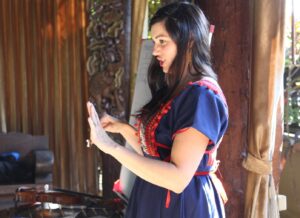
Teaching All Ages
Ammerman, who completed her Ph.D. in music education from George Mason University in 2018, has enjoyed a lifelong passion for music. She’s wanted to teach music for as long as she can remember, and a college professor’s impact on her confirmed her desire to pursue teaching after graduation.
“I knew that I wanted to teach teachers,” Ammerman, who was recognized as a 2024 Yamaha “40 Under 40” music educator, says. “The impact you have teaching the teachers is exponential!”
When she first started teaching, Ammerman’s dream job was teaching music in elementary school, so she started there. Then, she moved to teaching orchestra in middle school and high school. When she and her husband had their son, who is now 3, Ammerman became fascinated by early childhood development. Because she wanted to stay home with her son more, Ammerman started teaching one day a week at Art Time 4 Kids.
“It’s the most crucial time in a child’s life,” she says about ages birth to 3. “If we can impact them at this stage, the benefits are phenomenal for the rest of their life.”
Outside of teaching the little ones, Ammerman also works as an adjunct professor at George Mason University. She teaches two days a week online, and on Fridays, she goes to the Fairfax campus in person. She teaches a radical age mix of students during a typical week, but Ammerman says she loves the variety of this hodgepodge of classes, and she feels like she has come full circle.
“It’s fascinating and so fulfilling,” she says. “I’ve become fascinated with development over time and the trajectory of life.
“If you asked me what my favorite age is, the answer is: I love them all,” Ammerman says. “What many don’t expect about teaching is that teachers truly get more out of teaching than the kids. We learn so much from them.”

Shifting Gears
She has become good at dramatically shifting gears quickly: On some days, right after teaching the early childhood classes, she logs on to teach a virtual college class in professor mode.
No matter the student’s age, Ammerman says that music education should, above all, be fun. “To me, the biggest thing is that it doesn’t feel like work,” she says. “Music is so much fun and it just feels like you’re playing.”
Another key element of music education happens when music is a social activity. “I know we can enjoy music independently, but music is more fun when we are together,” she says. “I believe so firmly that that sense of belonging is a key component.”










